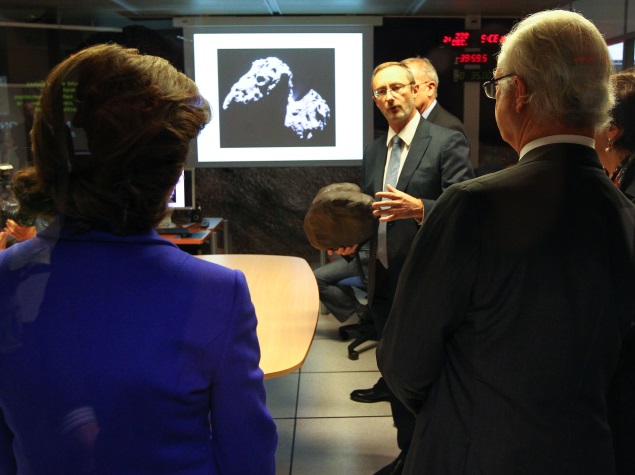- Home
- Science
- Science News
- Rosetta Spacecraft to Swoop Down on Comet in February: ESA
Rosetta Spacecraft to Swoop Down on Comet in February: ESA

The flyby will be the closest the comet explorer will come during its prime mission.
"It is the earliest we could carry it out without impacting the vitally important bound orbits that are currently being flown," said Matt Taylor, Rosetta project scientist from the European Space Research and Technology Center in the Netherlands.
"As the comet becomes more and more active, it will not be possible to get so close to the comet. So this opportunity is very unique," he added.
The low flyby will be an opportunity for Rosetta to obtain imagery with a resolution of a few inches per pixel.
The flyby will also allow the study of the processes by which cometary dust is accelerated by the cometary gas emission.
"Rosetta is providing us with a grandstand seat of the comet throughout the next year. This flyby will put us track side - it is going to be that close," Taylor noted.
The Rosetta orbiter deployed its Philae lander to one spot on the comet's surface in November.
Philae obtained the first images taken from a comet's surface and will provide analysis of the comet's possible primordial composition.
Get your daily dose of tech news, reviews, and insights, in under 80 characters on Gadgets 360 Turbo. Connect with fellow tech lovers on our Forum. Follow us on X, Facebook, WhatsApp, Threads and Google News for instant updates. Catch all the action on our YouTube channel.
Related Stories
- Samsung Galaxy Unpacked 2025
- ChatGPT
- Redmi Note 14 Pro+
- iPhone 16
- Apple Vision Pro
- Oneplus 12
- OnePlus Nord CE 3 Lite 5G
- iPhone 13
- Xiaomi 14 Pro
- Oppo Find N3
- Tecno Spark Go (2023)
- Realme V30
- Best Phones Under 25000
- Samsung Galaxy S24 Series
- Cryptocurrency
- iQoo 12
- Samsung Galaxy S24 Ultra
- Giottus
- Samsung Galaxy Z Flip 5
- Apple 'Scary Fast'
- Housefull 5
- GoPro Hero 12 Black Review
- Invincible Season 2
- JioGlass
- HD Ready TV
- Laptop Under 50000
- Smartwatch Under 10000
- Latest Mobile Phones
- Compare Phones
- Honor Win RT
- Honor Win
- Xiaomi 17 Ultra Leica Edition
- Xiaomi 17 Ultra
- Huawei Nova 15
- Huawei Nova 15 Pro
- Huawei Nova 15 Ultra
- OnePlus 15R
- Asus ProArt P16
- MacBook Pro 14-inch (M5, 2025)
- OPPO Pad Air 5
- Huawei MatePad 11.5 (2026)
- Xiaomi Watch 5
- Huawei Watch 10th Anniversary Edition
- Acerpure Nitro Z Series 100-inch QLED TV
- Samsung 43 Inch LED Ultra HD (4K) Smart TV (UA43UE81AFULXL)
- Asus ROG Ally
- Nintendo Switch Lite
- Haier 1.6 Ton 5 Star Inverter Split AC (HSU19G-MZAID5BN-INV)
- Haier 1.6 Ton 5 Star Inverter Split AC (HSU19G-MZAIM5BN-INV)

















